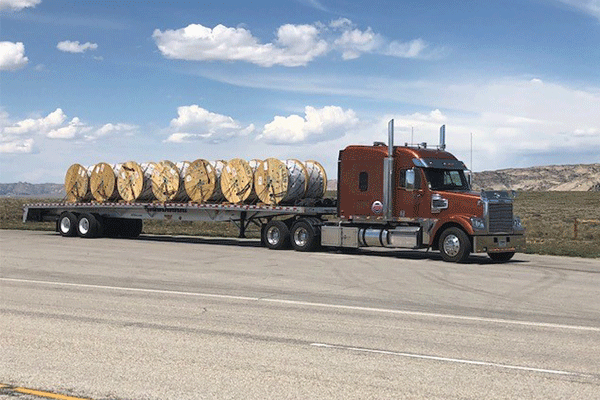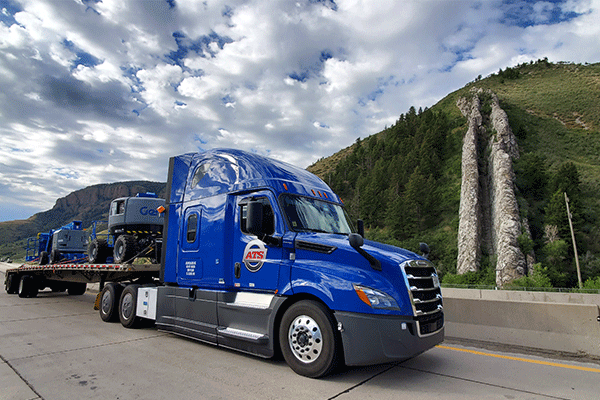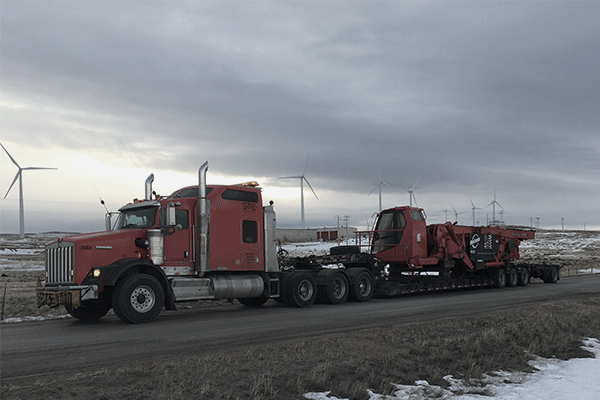
Did you know that all told, there are roughly 19,495 incorporated cities, villages, towns and communities in the United States of America?
Some of these cities are known for their vibrant music scenes, rainy climates, fresh seafood and their position as the birthplace of Starbucks coffee. Ok fine, maybe that’s just Seattle.
Other cities, though, boast excellent nightlife attractions and professional sports teams that have exclusively blue and green insignias. . . still Seattle?
The point is, in a country with nearly 20,000 potential freight shipping destinations, there are plenty of variances between the economies, climates and populations from one to the next.
Sometimes, the price you pay for your shipment is higher than you expected it to be and this can be incredibly frustrating. In many cases, this price hike is directly tied to your shipment’s destination.
But, without understanding how your freight’s endpoint impacts the price you pay to get it there, you’ll likely lose trust in your provider — who’s otherwise been a competent partner — and go looking for a cheaper option.
Doing this can be detrimental to your supply chain as you might damage your relationships with your partner and discover, the hard way, that cheap transportation solutions often come unglued.
Finding the lowest rate for your freight isn’t always the best way to go. Rather, understanding your pricing and the factors that influence its calculation is a far better route to venture.
Here at ATS, we’ve supplied truck capacity to and from many of this nation’s 19,495 destination points over the last 65 years. We’ve even dabbled a bit in the emerald city (Seattle again).
As a result, we understand that some destinations consistently cost more to ship freight to than others — due to several factors.
In this blog, we’ll explain these factors and outline some of the most common types of locations that prove challenging, and therefore pricey, to get freight to.
What Makes a Destination Challenging to Ship to?
Pricing in the trucking industry is intimately tied to the interplay between the supply of trucks available within a given market and the demand for their trailer space.
With this in mind, you should understand that cities with a large supply of outbound freight — freight that needs to be moved — are exactly where truck drivers want to be.
Truck drivers need to make the most of their time and want to end up in places where they know they’ll be able to find their next load.
Just like you wouldn’t walk into a sporting goods store expecting to chow down on a tasty lunch of lobster rolls and bisque, you shouldn’t expect a driver to find their next load in an endpoint like Priest River, Idaho (population 1,900).
Often, the most pricy shipping destinations fall into one or more of these five categories:
- The heavily congested and overpopulated metropolises of New York and Los Angeles
- Cities with tourism-based economies
- Locations without consistent freight demands
- Mountainous regions
- Remote locations
1. The Heavily Congested and Overpopulated Metropolises of New York and Los Angeles
Honking horns and bumper-to-bumper traffic on congested interstates crawling forth at a snail’s pace are a damaging combination for truck drivers hoping to make the most of their allotted on-duty hours.
A trucker’s clock doesn’t stop running while he’s waiting for traffic to subside along a busy avenue in the hopes of making an approaching appointment time. As such, the time a driver spends waiting in and safely maneuvering through traffic is time he’ll need to be compensated for.
This is especially the case in cities like New York and Los Angeles where populations are dense — to say the least.
Maneuvering an 80,000+ pound truck and trailer around tight corners on bustling streets in these cities is a nerve-wracking process that drivers — especially those who don’t do so frequently — like to avoid.
As a result, getting trucks to travel to locations like the Islands of New York City and into the depths of Los Angeles where the buildings are closely knit and access is limited, comes at a steep price.
Often, drivers will spend a day or more simply getting your freight into position for its drop-off appointment in these overpopulated areas and need to be compensated accordingly.
2. Cities With Tourism-Based Economies
Bright lights, loud music, cold drinks and open dance floors are the main commodities exported by some of America’s most popular cities.
Locations like Las Vegas, Nashville and Miami — although great destinations for human beings looking to get away from the tedium of everyday existence — aren’t exactly trucking capacity hotbeds.
Unfortunately, you can’t neatly palletize Luke Comb’s voice or the feeling you get from a night out on the Las Vegas strip with friends. As such, there’s simply not a whole lot of manufactured or fabricated goods for the truck drivers who end up in these locations to haul out of them.
This makes sending trucks into these cities a bit more spendy than if they were going to the manufacturing metropolises of Detroit or Chicago.
Although there may be some demand for capacity — due to the sheer size of some of these areas — locations that bolster their economy with tourism dollars can be pricey to send trucks into.
3. Locations Without Freight Shipping Demands
If you need to move a shipment to a location that — due to limited population or little manufacturing enterprises — does not need that truck’s services, you’ll need to pay more to get your freight there.
These destinations typically take the form of smaller towns that simply don’t have anything for your truck to haul after it drops off your freight. This forces your driver to find his next load in a nearby town or another location.
In this industry, we use the term “deadhead” to describe circumstances where a truck driver needs to drive — without a load under him — an extended distance to his next pick-up location. Often, these are miles that this driver won’t get paid for, and because of this, you’ll pay more to get your freight to these destinations.
Drivers like guaranteed freight and if they know that, at your endpoint, they’ll be hard-pressed to find it, you’ll need to compensate them accordingly.
4. Mountainous Regions

This one comes back to safety.
If you’ve ever driven through the mountain states — particularly during the winter months — you’ve seen the strategically placed “runaway truck” ramps littering the interstates.
The steep twists and razorback turns on the roads in these regions, coupled with the added liability risks of unpredictable weather due to altitude, can be a safety concern for drivers.
Avalanches, steep declines, icy passes, heavy traffic and rough terrain all make maneuvering through this region difficult for semi-trucks and dangerous for their drivers.
As such, if you’re a shipper hoping to get freight into these areas of our nation, doing so, especially when weather and road conditions are a factor, can be costly.
5. Remote Locations
Locations that are far from the regularly trodden path where populations are slim, gas stations are far between and cell reception is shoddy at best, shipping prices rise accordingly. Often these remote locations take the form of dense wilderness areas where people don’t necessarily reside and infrastructure is poor.
Examples of these remote locations include:
- Havasupai, Ariz.
- Hundred-Mile Wilderness, Maine
- Hoh Rainforest, Wash.
- Bob Marshall Wilderness, Mont.
Destinations like these are difficult to reach and often grant drivers little hope of quickly finding their next load. As a result, if you’re planning on moving freight into any of the remote locations scattered across the United States, plan to pay more.
 How to Make the Most of Your Budget When Shipping to These Areas
How to Make the Most of Your Budget When Shipping to These Areas
Now that you have a better understanding of what makes a destination difficult to ship freight to and therefore generally more costly, you’re likely wondering what you can do to maximize your budget when doing so.
You’re not going to rearrange your supply chain so that you can avoid all destinations with these criteria so you need some tools for avoiding any excessive price hikes in these regions.
Here are the three main ways that you can maximize your shipping budget when moving freight into these challenging destination points:
- Plan ahead
- Establish consistent carriers
- Allow flexibility
1. Plan Ahead
The best way to make the most of your shipping dollars when moving freight to any destination is to give your provider proper lead time to find your truck. Giving your transportation partner a good amount of warning — typically 48-72 hours — to find you a solution will help them find your capacity at a competitive price point.
Since you have a truck ready, waiting and willing to service your load, properly planning for your shipments will save you money as you’re not left scrambling for a last-second solution.
2. Establish consistent carriers
This is a must.
As your parents, piano teachers and past coaches have likely told you, practice makes perfect. Just as this is true when it comes to playing Beethoven’s ninth symphony or perfecting Greg Goldberg's "knuckle puck", the same can be said for shipping freight to any of these five destination types.
Carriers who consistently, and in some cases specialize in, moving freight into, from and through these areas can help you do so successfully.
If you’re consistently sending freight to any of these destinations, developing relationships with the companies that do so correctly, will save you money as they remove the complexity from this process.
3. Allow Flexibility of Trailer Type and Timing
In general, the more flexibility for the drop-off and pick-up timing of your shipments, the better. When it comes to getting freight to these challenging destination points, injecting flexibility into your processes is nearly vital.
Carriers like to book their loads days in advance, being flexible with your timeframes will help them conveniently add you to their schedule which, in turn, will save you money.
The second way that you can add flexibility to your shipping process is by opening yourself up to a wider array of trucking solutions. This industry is home to many equipment types that can, in some cases, be used interchangeably.
As such, lean on your transportation provider’s expertise and trust that a 53” step-deck trailer will move your freight just as effectively as that 53” flatbed.
Price hikes in these areas are intimately tied to a driver’s ability to find freight after dropping off your load. Opening your freight up to a wider range of trailer types will save you money especially if there’s demand for a different equipment type at your destination.
For example, if you need to move palletized freight into an area of the country that has a high demand for reefer capacity, allowing your carrier to move your freight in a reefer — so that they can find a load on the backend — will save you money.
Let’s Make the Most of Your Shipping Budget
And there you have it, the top five most challenging destination types explained. No one will ever say that moving freight is a simple process. The stakes are high and the options can be overwhelming. Finding the right partner to help you through it all is imperative to your success, especially if you frequently move freight to any of these destination types.
Your next step in making the most of your shipping budget this year is understanding the other factors that impact the price you pay to get freight moving.
Watch the video below where Mike outlines all of the factors that influence your freight rates!
If you would like to talk about how ATS can help you meet your shipping goals, no matter the destination point, reach out. We’re always happy to assist you!




